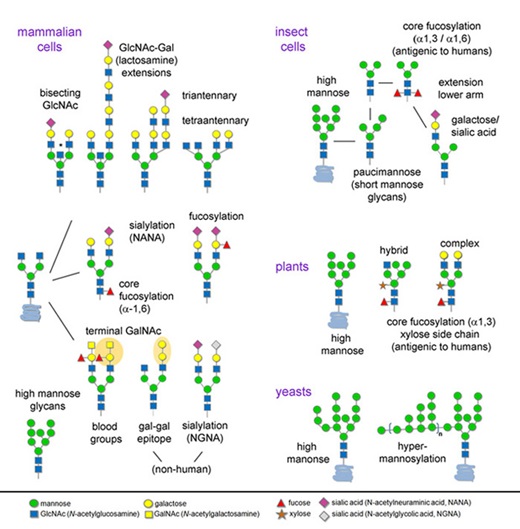Expression Systems
Choose Type:
- Which proteins are glycosylated?
- Are all membrane and extracellular proteins glycosylated?
- Are bacterial proteins glycosylated?
- Can I analyze protein glycosylation with only benchtop instrumentation and reagents?
- How many different glycans could a single protein have?
- Is it possible to predict whether a protein is N- or O-glycosylated?
- What is the difference between glycosylation and glycation?
- What is the difference between N-glycans, O-glycans, O-GlcNAc and proteoglycans (also called glycosaminoglycans, or GAGs)?
Products and content are covered by one or more patents, trademarks and/or copyrights owned or controlled by New England Biolabs, Inc (NEB). The use of trademark symbols does not necessarily indicate that the name is trademarked in the country where it is being read; it indicates where the content was originally developed. The use of this product may require the buyer to obtain additional third-party intellectual property rights for certain applications. For more information, please email busdev@neb.com.
This product is intended for research purposes only. This product is not intended to be used for therapeutic or diagnostic purposes in humans or animals.


